Nurses can help reduce injury through proactive assessment and early intervention.
Takeaways:
- A common misconception is that adults who are obese can’t experience malnourishment because their weight suggests excess caloric intake.
- All clinicians should receive education that addresses unconscious bias that may affect their communication and care. Sensitivity training can help increase awareness and compassion.
- Caring for patients who are obese requires an interdisciplinary approach.
According to the Centers for Disease Control and Prevention (CDC), 39.8% of adults in the United States are obese. (See Obesity and BMI.) Obesity and obesity-related conditions—including diabetes, heart disease, hypertension, stroke, elevated cholesterol, sleep apnea, musculoskeletal issues, and poor quality of life—are estimated to cost the country $147 billion to $210 billion per year. Adults who are obese also experience skin issues such as candidiasis, dermatitis, and pressure injuries. In addition, they frequently have multiple skinfolds, some located in atypical locations that pose additional challenges when providing nursing care.
Moisture-associated skin damage: The basics
Turning and repositioning patients who are morbidly obese
Prepare to care for patients of size
Obesity is categorized by body mass index (BMI), which is calculated by dividing a person’s weight (in kilograms) by height (in meters squared).
| Category | BMI |
| Underweight | < 18.5 |
| Normal weight | 18.5 – 249 |
| Overweight | 25 – 29.9 |
| Class I obesity | 30 – 34.9 |
| Class II obesity | 35 – 39.9 |
| Class III obesity | ≥ 40 |
Skin issues: Contributing factors
Excessive adipose tissue, impaired mobility, malnourishment, and skinfolds all contribute to skin issues in adults who are obese. Excessive adipose tissue has a poor blood supply, leading to inadequate oxygenation, which can impair wound healing. Adipose tissue also insulates the body, trapping heat, increasing patients’ core temperatures, and causing excessive sweating. The result is increased moisture, especially in skinfolds, that leads to fungal or bacterial growth.
Impaired mobility among adults who are obese can contribute to pressure injuries. Sources of pressure include the surface the patient is sitting or lying on, such as beds and wheelchairs, as well as medical equipment and devices such as catheter tubing. In addition, some patients may be unable to reach parts of their bodies, leading to poor hygiene.
A common misconception is that adults who are obese can’t experience malnourishment because their weight suggests excess caloric intake. However, their diets may be deficient in proteins and other nutrients essential to healing. Nutrient and vitamin deficiencies impact skin health and hinder healing when skin injuries occur.
Unusually deep skinfolds are unique to adults who are obese. In addition to skinfolds in expected areas of the body, they also may occur in atypical areas such as the neck, arms, breasts, abdomen, legs, and ankles. These folds are at risk for shearing and friction, which can contribute to more skin problems.
Common skinfold issues and skinfold care
Skinfold issues in adults who are obese require care and monitoring. Nurses should understand assessment and treatment for each of these.
Moisture control
The warm, moist, and dark skinfold environment is ideal for microorganism growth. A common culprit is Candida albicans, which can result in candidiasis. This condition presents as bright red, eroded skin that may include papules, plaques, pustules, and classic satellite lesions. Odor frequently is noted with candidiasis, which many patients find distressing.
To control moisture, advise patients to avoid tight clothing; use pH-balanced liquid soap, cleansers, or disposable wipes; and pat skinfolds dry, rather than aggressively rubbing. Hair dryers set on cold also can be used to dry skinfolds. Daily inspection of the skin, routine cleansing, and moisturizing as needed by patients and caregivers is beneficial.
Topical antifungals, such as nystatin powder, frequently are used to treat candidiasis. If topical therapy fails, a short-term oral antifungal may be necessary. However, antifungals address only the microorganism; moisture management is required to resolve the infection.
Other products are available for patients who have refractory skin issues despite good standard care. For example, a polyester knit textile product impregnated with silver can help absorb and wick away moisture and control odor. This product also provides antimicrobial action for up to 5 days. It’s placed at the base of the skinfold, extending about 2 inches beyond the fold. This product can be expensive and may not be necessary for everyone; reserve its use for special cases, including patients with antifungal allergies.
Intertriginous dermatitis
Intertriginous dermatitis (intertrigo) is an inflammatory condition in skinfolds. It may present as mild to moderate redness with skin erosion, drainage, maceration, and crusting. It usually is partial thickness and mirrors the pattern of skin breakdown on the opposite or “kissing” side of the skinfold. The condition, which can be painful, may develop as a secondary infectious process caused by C. albicans or bacteria. Caring for intertrigo includes moisture control, which can involve zinc oxide–based barrier creams or absorbent dressings depending on the condition’s severity.
Pannus care
The abdominal pannus (fold of excess abdominal fat and skin) is a common problem area for adults who are obese. (See Abdominal pannus grading.) A large pannus can significantly limit mobility, causing gait alterations and pain with ambulation. In addition, the pannus may lead to pressure injury formation, friction and shearing, moisture trapping, hygiene difficulty, and lymphatic changes that contribute to skin breakdown and infection (panniculitis).
An abdominal pannus can be described using a grading scale from 1 to 5, where 5 is the most severe.
Grade Description
1 Covers the pubic hairline but not the entire mons pubis
2 Extends to cover the entire mons pubis
3 Extends to cover the upper thigh
4 Extends to midthigh
5 Extends to the knee and beyond
Source: Blackett et al.
Pannus assessment requires lifting it to visualize the base of the skinfold. In some cases, multiple staff and lifting devices or slings may be needed. Watch for pannus skin irritation and skin breakdown, including intertrigo, candidiasis, and painful skin erosions. Panniculitis can be difficult to prevent and treat, and it may recur. Treatment for panniculitis typically involves systemic antibiotics and skinfold care. In extreme cases, surgical debridement or removal of the pannus (panniculectomy) may be considered. Keeping the pannus clean and dry is the best way to prevent infection and other issues.
Perineal care
Genital and perineal skin can be especially challenging to care for in patients who are obese. They may have deep skinfolds in the groin and buttocks with high friction and increased moisture from perspiration, which may be compounded by incontinence. Perineal care requires carefully assessing these areas while respecting a patient’s modesty and comfort. Cleaning and drying the skin gently but thoroughly and applying barrier products (films or creams) after any incontinent episodes are recommended.
Barrier products can protect skin from repeated exposure to bodily fluids, especially urine and feces, that can irritate the skin; wicking fabrics are impractical because of toileting or incontinence. Note that ingredients in some barrier products can impair the absorbency of incontinence products. Using too much product can cause skin cracking and discomfort, and some products can obscure skin assessment. Also consider patient allergies when choosing a barrier product.
Hygiene after toileting can be challenging for patients who are obese, increasing the risk of skin breakdown or infection in the genital and perineal area. Washcloths or premoistened wipes may be preferable to toilet paper, and using a handheld showerhead when bathing may aid hygiene.
Pressure injuries
Foreign objects, such as catheter tubing or a cell phone, can get trapped between skinfolds and lead to device-related pressure injuries. In addition, atypical pressure injuries may occur because of pressure from bed rails, chair arms, or wheelchair foot and calf rests. Immobile patients may develop pressure injuries on their heels and sacrum. Provide floating heels as indicated and help patients turn and reposition.
Acanthosis nigricans
Acanthosis nigricans is characterized by areas of dark, velvety discoloration in skinfolds and creases; it’s sometimes mistakenly associated with poor hygiene because of the dark color and skin thickening. The condition, which may be seen in the neck, axilla, and inguinal folds, is common among people with darker skin pigmentation. No cure exists for this condition, but glucose control and weight loss may help. A dermatologist may be able to provide cosmetic treatments to improve skin appearance.
Other considerations
Caring for patients who are obese requires an interdisciplinary approach that includes physical therapists (for mobility issues), occupational therapists (for help with devising or recommending effective tools patients can use to clean themselves after toileting), physicians (for medical needs), dietitians (for nutritional intervention), speech therapists (for difficulty swallowing because of anatomic shifting caused by weight gain), mental health professionals (for anxiety and depression), chaplaincy (for spiritual needs), and wound, ostomy, and continence nurses (for skin and wound care management). Proper care also requires clinician education and attention to patient, personal caregiver, and clinician safety.
Clinician education
All clinicians should receive education that addresses unconscious bias that may affect their communication and care. Sensitivity training can help increase awareness and compassion. Listen to patients, make eye contact with them, and involve them in care plans. Find opportunities to ensure patient dignity. For example, encourage toileting or scheduled toileting rather than adult diapers.
Safety
When assessing and cleaning skinfolds, take steps to ensure patient, caregiver, and clinician safety. For very heavy skinfolds, mobilization devices such as pannus lifts may be necessary. Enlist a sufficient number of trained staff to slowly and carefully move the patient and skin. If the patient is at home, train dependable family members and responsible caregivers to properly use any special equipment.
Appropriate-size lift equipment may be necessary to turn and mobilize patients out of bed. Bariatric chairs and beds are recommended, as are toilet risers with handrails or bariatric commodes or toilets that can accommodate the patient’s size and weight. Inappropriate-size equipment may increase pressure injury risk or other harm (for example, falling out of an inappropriate-size chair).
Care with confidence
Skinfold management (assessment, hygiene, and safe handling) is vital to caring for patients who are obese. Advocate for adequate staffing, safe handling techniques, and appropriate equipment and supplies, as well as patient, personal caregiver, and clinician education. Each patient has different needs. You can address them with confidence when you have the tools and knowledge to provide evidence-based care.
Armi S. Earlam and Lisa Woods are wound, ostomy, and continence nurses at Lutheran Medical Center in Wheat Ridge, Colorado.
References
Beitz JM. Providing quality skin and wound care for the bariatric patient: An overview of clinical challenges. Ostomy Wound Manage. 2014;60(1):12-21.
Black J, Hotaling T. Ten top tips: Bariatric skin care. Wound Inter. 2015;6(3):17-21.
Blackett A, Gallagher S, Dugan S, et al. Caring for persons with bariatric health care issues: A primer for WOC nurses. J Wound Ostomy Continence Nurs. 2011;38(2):133-8.
Centers for Disease Control and Prevention. Overweight and obesity: Adult obesity facts. February 27, 2020. cdc.gov/obesity/data/adult.html
Fencl JL, Walsh A, Vocke D. The bariatric patient: An overview of perioperative care. AORN J. 2015;102(2):116-31.
Fletcher J. Appropriate selection and use of barrier creams and films. Wound Essentials. 2016;10(2):64-8.
Hebert GR. Providing skin care for bariatric patients. Wound Care Advisor. 2015;4(6). woundcareadvisor.com/providing-skin-care-for-bariatric-patients-vol4-no6
Holsworth C, Gallagher S. Managing care of critically ill bariatric patients. AACN Adv Crit Care. 2017;28(3):275-83.
McGinley LD, Bunke J. Best practices for safe handling of the morbidly obese patient. Bariatric Nurs Surg Pt Care. 2008;3(4):255-60.
Morello SS. Skin and wound care for the bariatric population. In: Doughty DB, McNichol LL, eds. Wound, Ostomy and Continence Nurses Society® Core Curriculum: Wound Management. Philadelphia, PA: Wolters Kluwer; 2016; 242-252.
Rush A, Muir M. Maintaining skin integrity bariatric patients. Br J Community Nurs. 2012;17(4):154, 156-9.
Shipman AR, Millington GW. Obesity and the skin. Br J Dermatol. 2011;165(4):743-50.
VHA Center for Engineering & Occupational Safety and Health. Bariatric Safe Patient Handling and Mobility Guidebook: A Resource Guide for Care of Persons of Size. July 2015. asphp.org/wp-content/uploads/2011/05/Baraiatrice-SPHM-guidebook-care-of-Person-of-Size.pdf




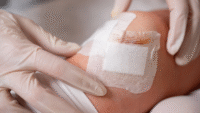
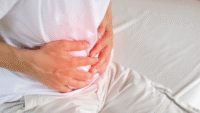
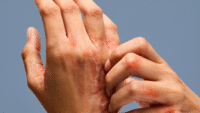


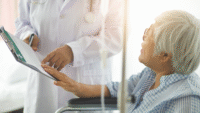

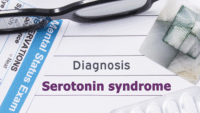
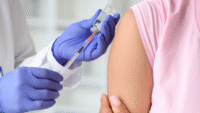
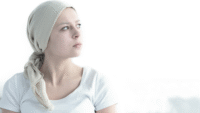

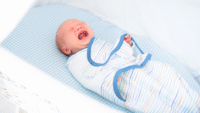



2 Comments.
Thank you for this article. It was helpful to me because i help obese women to lose weight and love themselves deeper. Learning more about their needs has been educational.
Warm Regards,
Karen
Thank you for the opportunity to learn more on this topic!